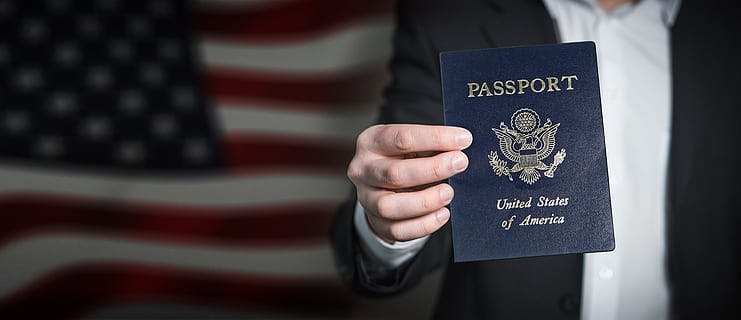The Land of the Free and the Home of the Brave, this is what the United States of America is, what the free thinkers, and the braves at heart aspire to be a part of. The U.S. is the foremost global power, as it is the most economically and militarily powerful country of the world. In furtherance, the cultural imprint of the country traverses across the world, mainly because of its rich heritage, and its diverse cultural and racial background. As a nation, the U.S. has surpassed the world's records on sports competitions, music, movies and television awards, technological, and medical advances.
All this power is founded on one simple, yet complex factor that the U.S. has over any other country in the world, and that is: the immense diversity of talent, and aptitude that comes with the integration of immigrants into only one place to work together towards one common goal...to rise above. The power of the United States has grown from the ideas, challenges, and innovations of immigrants, and it would be an ignorance to repudiate and reject the fact that this nation is one construed for, and by immigrants.
Despite this fact, the U.S. faces political challenges on racial disparities and tensions, national security, and immigration policies. All of these issues have been on the top of the political agenda during President Trump’s presidency, mainly because he based his Presidential Campaign on stressing an apparent urgent need to close the U.S. borders from “unwanted immigrants” to “Make America Great Again”. Trump’s campaign, and political stands on immigration are detrimental to what actually makes the U.S. the foremost global power: Immigrants. Specifically, Trump’s presidency has been characterized by his strong support on building a wall between the Mexican border and the U.S., and by his ceaseless stance to terminate the Deferred Action for Childhood Arrivals, DACA.
What is DACA?
The Deferred Action for Childhood Arrivals is an immigration policy that was created under President Obama's administration to provide something similar to legal protection to undocumented immigrants in the United States who were brought to the country by their parents illegal entry when they were minors, and whom have lived in the United States throughout their adult lives.
DACA was introduced after several previous negotiations failed to deal with the issue of immigrants who were brought by their parents to the United States and had no intention of becoming illegal immigrants. The Bill that was attempted to be adopted previous to DACA was the Development, Relief, and Education for Alien Minors Act, which in short is called the DREAM Act. From this Bill’s name resulted that the young undocumented immigrants who were to be benefitted by this program are called the Dreamers.
After the bill was discussed and negotiated in Congress for ten years, it failed time after time, and it never passed. However, it gained popularity throughout the United States, and it woke a sense of urgency on resolving the issue these children were facing. The fact that the Dreamers were unprotected under the law even though they were brought to the United States at young ages, and they identified themselves as Americans, is something that could not be ignored by the American people or by the Government.
Consequently, in 2012 the movement to protect minorities groups, especially Latinos, from being targeted by the U.S. government was at its peak. The re-election of President Obama was a relief and a perfect opportunity to take a stand against the overly precluded legislations on immigration reforms because of his strong campaign of inclusion of minority groups and Latinos in the American political agenda.
And so, during his 2012 announcement, President Obama took a stand to speak about the failure of Congress to come together as one and consolidate the legislation of the DREAM Act to make it a reality. He then announced that because of Congress’ inaction on the matter, the Department of Homeland Security, DHS in short, would adopt a temporary solution for immigrants who were eligible, and “do not present a risk to national security or public safety” to be protected under the law of the U.S. until the government could provide a more suitable solution for their particular circumstances as immigrants in the country.
But a more permanent solution has not come into terms, on the very contrary the solution that DACA provides to this group of immigrants became endangered of becoming extinct since 2017 under Trump’s administration, until June 2020 when the Supreme Court rejected its cancellation and ruled that the attempt of the administration to withdraw DACA is “arbitrary and capricious.”
How did we get here?
It all started in 2016, when President Trump was elected President of the United States. He assured on multiple occasions that the recipients of DACA did not have to be preoccupied or worried about their status because DACA would not be his focus of immigration policies reforms.
Many DACA recipients stood firm in their belief that their protection under the law would remain, at least temporarily until a new solution was worked out. However, this all changed when in September 2017 President Trump announced that under his administration he would terminate DACA, leaving something close to a million recipients of the program unprotected and vulnerable under the law. Mr. Trump delayed the program’s end by six months, saying he wanted to give Congress time to pass legislation that would permanently protect the Dreamers from deportation and give them an eventual path to citizenship.
The day of the announcement, the current White House Secretary at the time, Sarah Huckabee Sanders, questioned the Constitutionality of the program, and called it “a clear violation of the federal law”, she stated: “It’s not cold-hearted for the President to uphold the law. We are a nation of law and order and the day that we start to ignore the fact that we are that, then we throw away everything that gives these people a reason to want to come to our country. If we stop becoming the country that we were envisioned to be, then we throw away what makes us special, which makes America unique. This President’s not willing to do that. The previous administration was, this one isn’t.”
At this point, these immigrants, called by their popular name as Dreamers, were facing the risk of getting prosecuted and deported by the U.S. government, because the termination of this program would leave them vulnerable, and exposed to the Federal Government without access to Constitutional protections, or justice.
To make matters worse, had DACA been reversed as President Trump’s administration attempted, the Dreamers would’ve been left in a legally compromising position because the U.S. federal government now has access to the personal information and details of these immigrants. To participate under the program and obtain the benefits that DACA offer, Dreamers had to come forward and enter their personal information, their addresses and their complete names, they also were subjected to background checks and were promised to be allowed to live openly in the U.S. if DACA was terminated, these immigrants, mostly Latinos, would’ve been exposed to the U.S. federal government, and exposed to be deported back to their parents' countries in which they have absolutely nothing waiting for them.
And so because of the seriousness of the matter, initially, Trump’s six-month deadline put pressure on lawmakers in both parties to reach a deal. But this pressure faded when a lower court judge blocked the decision to end DACA and ordered the government to continue operating it.
Legal Procedures Against DACA
In November of 2018, the United States Court of Appeals for the Ninth Circuit, in San Francisco, ruled against termination of DACA, and questioned “the cruelty and wastefulness of deporting productive young people to countries with which they have no ties.” Trump’s administration took the unusual move of bypassing the U.S. Court of Appeals for the Ninth Circuit and requesting that the U.S. Supreme Court directly take up the case. At that time, the Supreme Court declined to do so.
In May, a second federal appeals court, the Fourth Circuit in Richmond, Va., issued a similar ruling against the termination of DACA. Following this, the Trump administration again circumvented a forthcoming ruling and directly appealed to the U.S. Supreme Court a second time. Shortly after that, the Ninth Circuit upheld the decision of the federal district court to block termination of the DACA program.
Supreme Court Decision
The Supreme Court then agreed to hear an appeal of the Ninth Circuit’s ruling on DACA, along with two other similar cases in which appellate courts had not yet issued rulings. And after months of waiting for the ruling since the hearings started in October of 2019, the Supreme Court ruled on June 18, 2020, that Trump's administration cannot carry out its plan to shut down DACA. [link]
Chief Justice John Roberts was the swing vote in the 5-4 decision, which deals a big legal defeat to President Donald Trump on the issue of immigration, a major focus of his domestic agenda.
Roberts wrote in the decision that the government failed to give an adequate justification for ending the federal program, and he was joined in the majority by the liberal Justices Ruth Bader Ginsburg, Stephen Breyer, Elena Kagan and Sonia Sotomayor.
"We conclude that the acting secretary did violate" the Administrative Procedure Act, and that the decision to rescind DACA must be vacated," Roberts wrote. In his decision, Roberts called the Trump administration's "total rescission" of DACA "arbitrary and capricious."
This is a marvelous decision for the immigrants who depend on the protections that this program offers them, to legally stay in the United States, and to be authorized to work in the country.
It is for this reason, that at Sabalier Law, we are delighted to continue offering our legal services to the immigrant community and any person who may need to clarify their legal status in the United States.









